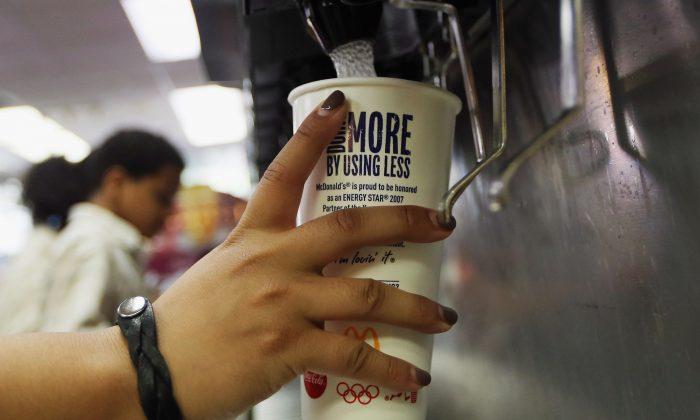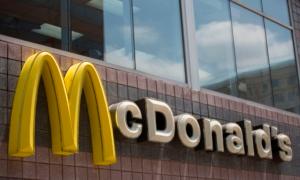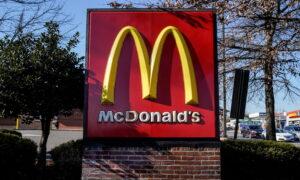McDonald’s will be eliminating self-serving drink machines from all of its restaurants in the United States within the next 10 years, the company has confirmed.
The decision means customers will now have to get their refills from employees at the counter as opposed to filling up their drinks by themselves.
“McDonald’s will be transitioning away from self-serve beverage stations in dining rooms across the U.S. by 2032,” the company confirmed in a statement to The Epoch Times.
“This change is intended to create a consistent experience for both customers and crew across all ordering points, whether that’s McDelivery, the app, kiosk, drive-thru or in-restaurant,” the spokesperson added.
It is also not immediately clear exactly how the change will impact drink refills, as every McDonald’s franchise location has its own refill policies.
The McDonald’s USA spokesperson also did not state if the decision will also impact McDonald’s restaurants in international locations.
It is also unclear what prompted the move, although COVID-19 pandemic lockdowns have led to a change in eating habits for consumers, including a decline in fast-food restaurant dining and a rise in consumers ordering food for takeout, according to experts.
The publication reports that McDonald’s restaurants will be transitioning to the crew pour system after scrapping the self-service stations which will also minimize contact.
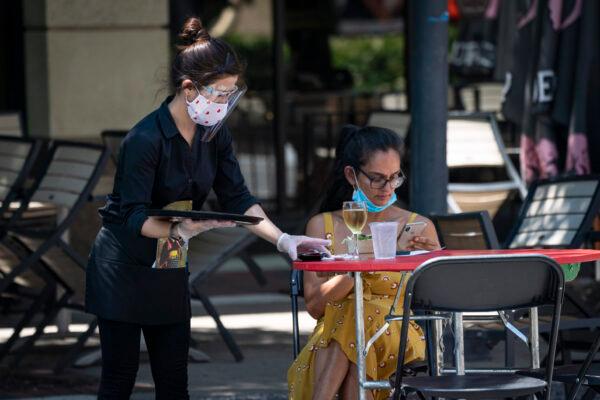
Pandemic Changes Dining Landscape
The new system will also eliminate theft, the publication noted.According to the Springfield State Journal-Register, some McDonald’s restaurants in Illinois have already begun the transition away from self-service stations but those transitions won’t be fully complete until the summer of 2024.
Franchise owner Brad Davis, in Springfield, Illinois told the publication that his restaurant was selected as a test location for the new “crew pour” system.
“It was an adjustment for customers and staff,” Mr. Davis said. “But we didn’t get too many complaints on it.”
The decision comes as McDonald’s has introduced a string of changes in recent years, including opening its mostly non-human-run, automated restaurant near Fort Worth, Texas.
That restaurant, which drastically minimizes human contact, is part of McDonald’s “Accelerating the Arches” growth strategy.
Multiple fast-food companies have also moved to embrace new technology in recent years amid a changing landscape, particularly in the wake of the pandemic.
Taco Bell has also started experimenting with a similar elevated kitchen format, according to the publication.
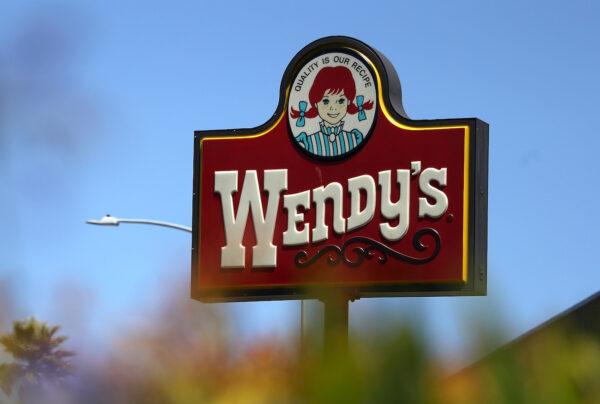
Wendy’s Embraces AI
Meanwhile, Wendy’s is incorporating artificial intelligence into its model and has teamed up with Google to create an AI chatbot that can take orders at its drive-thrus.“The innovative restaurant technology behind Wendy’s FreshAI is initially intended to transform drive-thru ordering by delivering greater speed, accuracy, and consistency to customers,” the company says on its website. “The future of AI technology has the potential to integrate with Wendy’s app, in-restaurant kiosks, mobile devices, smart home devices, and more with a multi-channel approach to provide the best experience for our customers – however they choose to order,” the website adds.
McDonald’s said digital sales—comprised of app, delivery, and kiosk purchases—accounted for nearly 40 percent of system-wide sales for the second quarter of 2023.
Meanwhile, revenue rose 14 percent to about $6.5 billion for the quarter, while net income nearly doubled to just over $2.3 billion for the quarter.
“Our second quarter results reflect consistently strong execution of our Accelerating the Arches strategy, with global comparable sales growth of 11.7 percent and double-digit comparable sales growth across each of our segments,” said McDonald’s President and CEO Chris Kempczinski.
“The McDonald’s brand has never been stronger and I remain inspired by the ability of the McDonald’s System to create cultural conversations and develop industry-leading innovations. While global macroeconomic challenges persist, we continue to invest in our growth drivers and our brand to meet the customer needs of tomorrow,” the CEO said.
